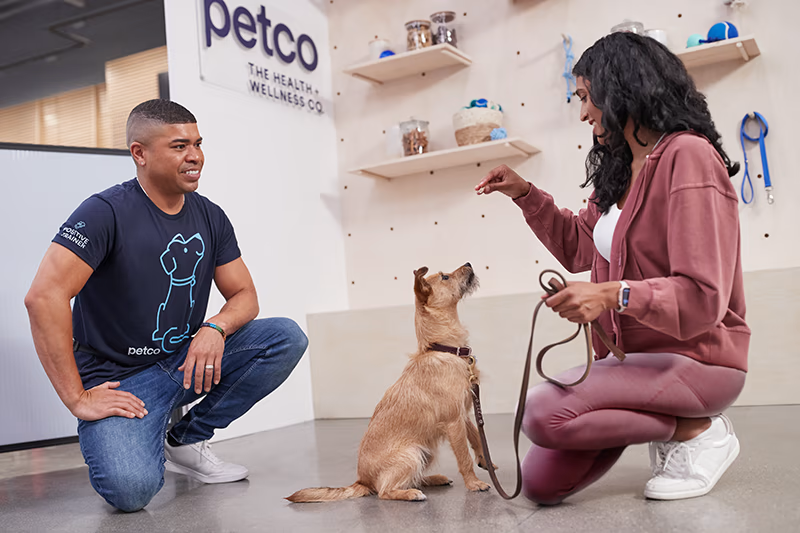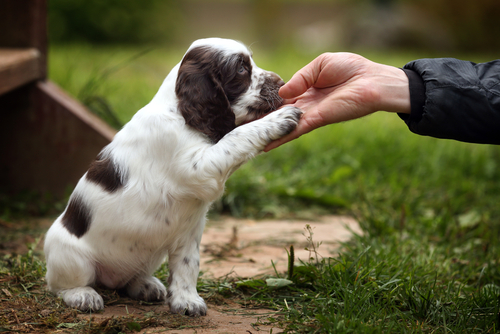Common Mistakes to Avoid in Puppy Training and How to Correct Them
Common Mistakes to Avoid in Puppy Training and How to Correct Them
Blog Article
Leading Young Puppy Educating Strategies to Guarantee a Well-Behaved Animal
Efficient puppy training is important for growing a well-behaved buddy, and different techniques can significantly influence a dog's development. As we check out these approaches further, it ends up being clear that the success of puppy training hinges on a mix of strategies that can change your family pet's behavior in remarkable methods.
Favorable Support Strategies
Using favorable support strategies is essential for reliable puppy training, as it encourages desired behaviors through incentives rather than punishment. This technique takes advantage of the natural discovering processes of dogs, enhancing etiquette by providing instant and concrete benefits, such as deals with, praise, or play. By connecting favorable outcomes with certain actions, young puppies are more probable to duplicate those habits in the future.
Rewards ought to be given right away after the preferred habits occurs to produce a clear connection in the puppy's mind. In addition, varying the kinds of rewards can maintain a puppy's interest and motivation throughout the training process.

Consistency in Educating Commands
Keeping uniformity in training commands is vital for strengthening the lessons learned with positive reinforcement methods. Dogs prosper on regular and predictability, so using the same verbal commands and hand signals for particular actions is crucial. This uniformity aids pups comprehend what is expected of them, minimizing complication and disappointment for both the family pet and the fitness instructor.

Timing additionally plays a considerable duty in consistency. Commands ought to be supplied quickly during training sessions and followed instantly by positive reinforcement, such as deals with or appreciation. This instant feedback helps solidify the association between the command and the wanted habits.
Integrating consistency right into training sessions will create a secure knowing environment, advertising quicker proficiency of commands. Inevitably, a well-structured method promotes a solid bond in between the young puppy and its proprietor, causing a much more well-behaved and loyal pet dog.
Socializing With Various Other Pets
Socialization with various other family pets is critical for a puppy's development, as it aids them discover proper actions and interaction abilities in varied social contexts. Very early communications with different animals can considerably affect a pup's temperament and flexibility in various situations. When pups are exposed to a range of animals, they come to be a lot more confident and much less fearful, which can avoid prospective behavior problems later on in life.

Show your pup to identify signals from other pets, such as signs of playfulness or pain, fostering mutual regard and understanding. Routine socialization not just improves your pup's social abilities yet likewise contributes to their total well-being, creating a much more harmonious living atmosphere.
Crate Training Advantages
Recognizing the countless advantages of crate training can considerably improve both the young puppy's and proprietor's experience. Crate training offers a protected and safe environment for puppies, ensuring they feel secured when left alone. This complacency can dramatically lower anxiousness and tension see this website levels for both the pet dog and the owner.
Furthermore, cages work as a useful house-breaking tool. Pups normally avoid soiling their sleeping area, thus motivating them to hold their bladder up until they are allow outdoors. This reaction can speed up the house-breaking process, cultivating great practices at an early stage.
When without supervision,Crate training also assists in managing a pup's behavior - puppy training. By supplying a marked room, proprietors can protect against devastating habits, such as chewing on furnishings or getting into harmful substances. Dog crates can be advantageous throughout traveling, using an acquainted space that can aid soothe a pup in new atmospheres.
Finally, establishing a cage routine motivates independence, permitting pups to learn just how to be alone without fear. On the whole, pet crate training is an effective technique for promoting discipline, safety and security, and tranquility, leading to a well-adjusted, mannerly pet.
Leash Training Essentials
Leash training is a fundamental aspect of responsible family pet ownership that guarantees a safe and pleasurable strolling experience for both the pup and its proprietor. Appropriate leash training begins early, ideally during the puppy's socializing period. This training helps develop great practices and advertises favorable behaviors when out in public.
To begin, choose a comfortable collar or harness that fits your puppy well. Attach a sturdy leash, ensuring it is not also long, as this look what i found can lead to drawing and erratic actions. Beginning in a peaceful setting to reduce diversions and slowly introduce your young puppy to brand-new environments.
Usage favorable support methods, such as treats and praise, to urge your pup to stroll next to you. If your pup draws, quit strolling and wait for them to return to your side before proceeding.
Additionally, incorporate short training sessions with enjoyable diversions to construct your pup's focus. With devotion and determination, leash training will lead to an accommodating buddy, making strolls enjoyable for both the owner and the young puppy.
Final Thought
In conclusion, utilizing effective puppy training methods is crucial for creating a well-behaved family pet. Overall, these techniques collectively promote an unified partnership between puppies and their owners.
As we discover these approaches better, it becomes clear that the success of pup training pivots on a mix of methods that can transform your family pet's habits in exceptional ways.
Utilizing favorable support techniques is vital for effective pup training, as it encourages desired habits with benefits rather than penalty.Crate training also assists in managing a young puppy's actions when not being watched.Leash training is a fundamental element of liable pet dog ownership that guarantees a safe and pleasurable strolling experience for both the young puppy and its owner.In final thought, employing effective puppy training strategies is critical for establishing a mannerly pet.
Report this page